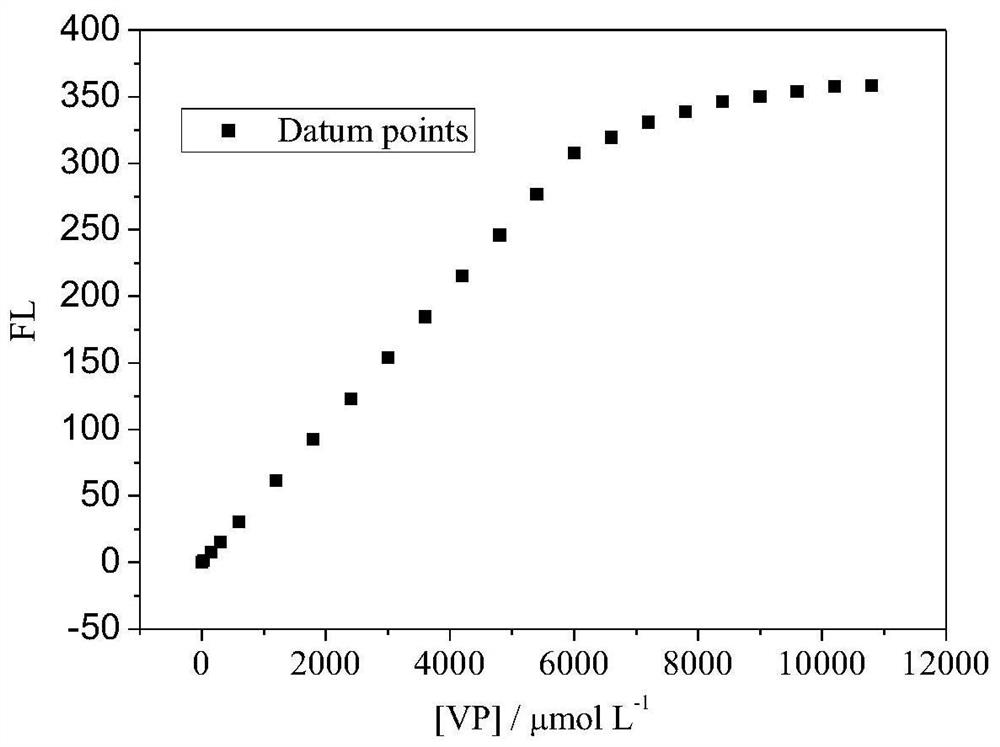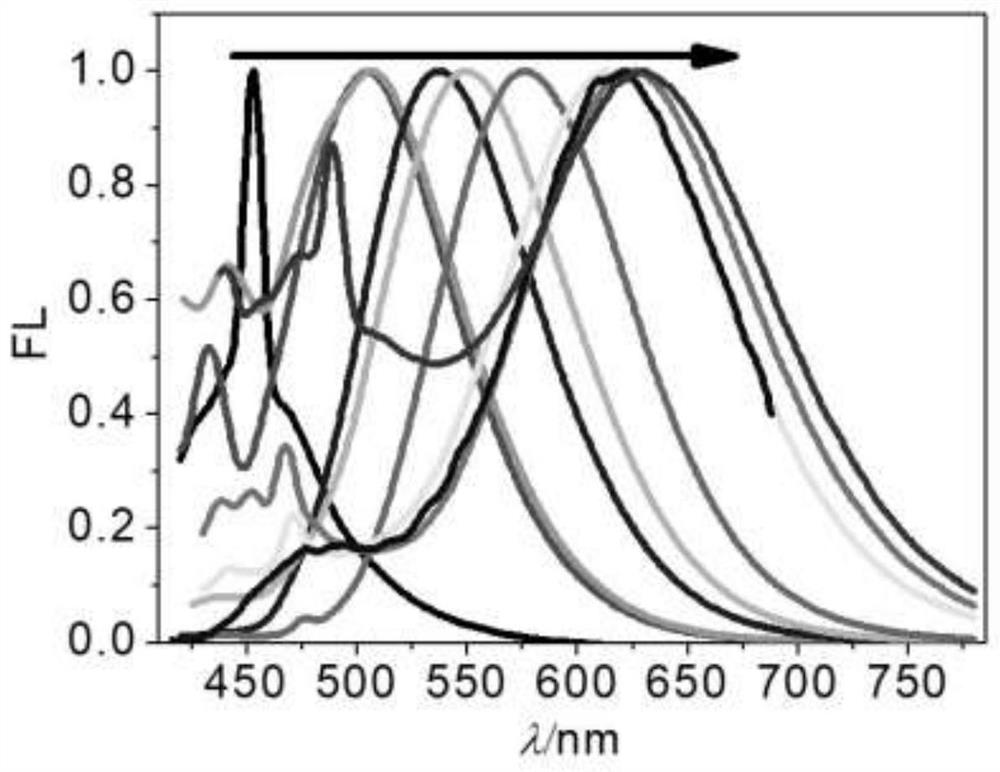Dicyano-stilbene type two-photon fluorescent solvent chromogenic water-soluble probe and its synthesis method and application
A dicyano-stilbene and two-photon fluorescence technology, which is applied in the fields of fluorescence/phosphorescence, chemical instruments and methods, and luminescent materials, can solve the problems of cell viscosity change monitoring that have not been reported, and achieve improved clarity and absorption Large cross-section, good chemical/light stability
- Summary
- Abstract
- Description
- Claims
- Application Information
AI Technical Summary
Problems solved by technology
Method used
Image
Examples
Embodiment 1
[0037] Embodiment 1 Molecular structure and synthetic route
[0038] A dicyano-stilbene type two-photon fluorescent solvent chromogenic water-soluble probe VP has the following molecular structure:
[0039]
[0040] The synthetic route is:
[0041]
[0042] Wherein, intermediates 2, 3, 4, 5, 7, and 8 were all synthesized according to the following documents:
[0043] [1] H. Huang, Q. He, H. Lin, F. Bai, Z. Sun and Q. Li, Polym. Adv. Technol., 2004, 15 (): 84—88
[0044] [2]Huang C., Fan J., Peng X., Lin Z., Guo B., Ren A., Cui J., Sun S., J.Photochem.Photobio.A:Chem.,2008,199( 2–3):144–149
[0045] [3] Moon K.-J., Shim H.-K., Macromolecules, 1996, 29:861
Embodiment 2
[0046] The synthesis of embodiment 2 intermediate 9 and target compound VP
[0047] Synthetic method: (1) Put intermediate 8 (1.49g, 5.1mmol) in a 25mL round-bottom single-necked flask, then add 3mLTHF and NaH (130mg, 5.4mmol), vacuumize and fill with argon, and stir under an ice-water bath A solution of 1,4-dicyano-2-methyl-5-(diethylphosphorylmethyl)benzene (5) (1.46 g, 5.0 mmol) in THF (9 mL) was added dropwise. After the dropwise addition, react in an ice-water bath for 1 h, then remove the ice-water bath and react at room temperature for 12 h. And the reaction was continued overnight at room temperature. Spin dry with CH 2 Cl 2 (4×10mL) eluting with CH 2 Cl 2 eluent with H 2 O (2×10mL) was washed with anhydrous Na 2 SO 4 Dry, filter and spin-dry and dry in an oven for subsequent use;
[0048] (2) The crude product of intermediate 9 (400 mg) and Na 2 CO 3 (5mL, 10%) in ethanol (10mL) was stirred at 50°C for 2h, after the reaction was completed, 5mL of hydrochlor...
Embodiment 3
[0050] The water solubility research of embodiment 3 probe VP
[0051] In order to study the solubility of probe VP in water, the attached figure 1 Experiments shown. attached by figure 1 It can be seen that when the concentration of VP gradually increases from 0 to 6000 μmol L -1 , the single-photon fluorescence intensity of the solution also increases gradually, and is proportional to the concentration; when the concentration increases further, the single-photon fluorescence intensity increases very slowly, and the data points formed by the concentration of VP and the single-photon fluorescence intensity deviate from The original straight line falls below the original straight line. Since the fluorescence intensity of the fluorescent substance is directly proportional to its concentration, it can be concluded that when the concentration of VP is greater than 6000μmol L -1 When , the VP cannot be completely dissolved, otherwise the data points will not deviate from the or...
PUM
 Login to View More
Login to View More Abstract
Description
Claims
Application Information
 Login to View More
Login to View More - R&D
- Intellectual Property
- Life Sciences
- Materials
- Tech Scout
- Unparalleled Data Quality
- Higher Quality Content
- 60% Fewer Hallucinations
Browse by: Latest US Patents, China's latest patents, Technical Efficacy Thesaurus, Application Domain, Technology Topic, Popular Technical Reports.
© 2025 PatSnap. All rights reserved.Legal|Privacy policy|Modern Slavery Act Transparency Statement|Sitemap|About US| Contact US: help@patsnap.com



